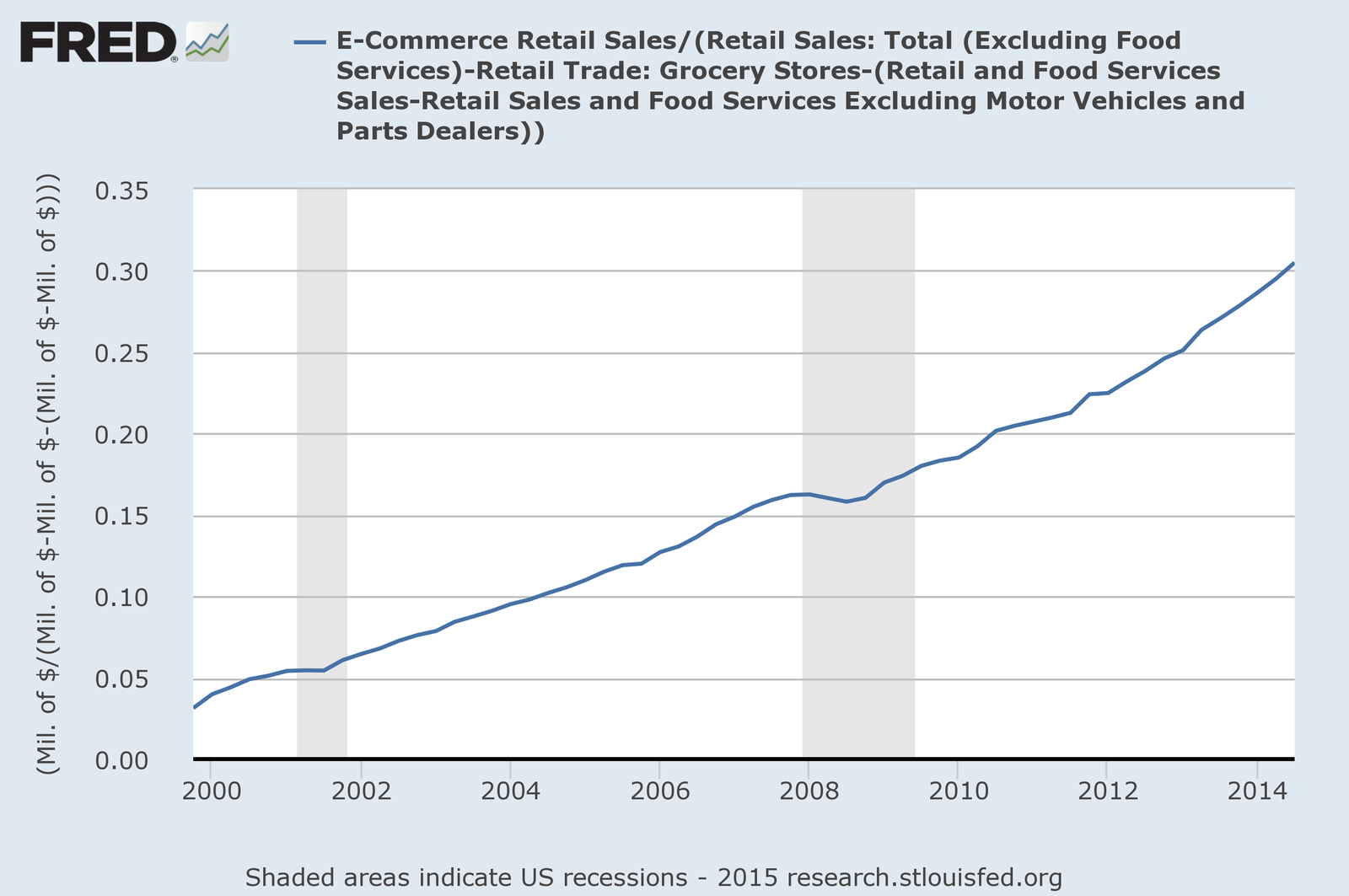(Photo credit: “Dead Mall,” by flickr user Michael Meiser via Attribution 2.0 license)
As a citizen of the Internet and a card-carrying member of Amazon Prime, I don’t do much of my shopping in person. I’m not particularly fond of crowds, interacting with salespeople, driving, traffic, or parking, and with the ability to have nearly anything delivered to my house for free, there really are very few reasons for me to shop in person. Needless to say, I had not given the state of America’s indoor shopping malls much thought until I ventured out to Landmark Mall on Christmas Eve for the time-honored tradition of taking my kids to see Santa.
As it was Christmas Eve, I was anticipating a rushed, harried mass of people, frantically trying to find last minute gifts and deals; but what I found was the complete opposite. This indoor mall was a ghost town. We parked very close to the entrance, waited behind one family to see Santa, and there were shuttered stores throughout the space.
It was a very pleasant – if not eerie – trip. I couldn’t help to feel bad about how gloomy the mall felt. And then I thought, am *I* responsible for this? While it is true that this particular mall is due to be redeveloped in the near term (which surely has affected its occupancy), malls across America find themselves falling to similar fates or worse. In fact, Nelson D. Schwartz wrote about a similar experience to mine in The New York Times this past weekend:
Inside the gleaming mall here on the Sunday before Christmas, just one thing was missing: shoppers.
The upbeat music of “Jingle Bell Rock” bounced off the tiles, and the smell of teriyaki chicken drifted from the food court, but only a handful of stores were open at the sprawling enclosed shopping center. A few visitors walked down the long hallways and peered through locked metal gates into vacant spaces once home to retailers like H&M, Wet Seal and Kay Jewelers.
While it is true a number of factors have contributed to the decline of indoor malls (low income growth in lower income groups, the faltering of anchor stores such as Sears and JC Penny, and shifts in demographics and centers of affluence), I can’t help but to think the rise of online shoppers is doing the most damage to indoor shopping malls. However, Schwartz claims that online shopping is only having a small affect on malls, and suggests less than 10 percent of retails sales take place online. Vox takes a closer look at that 10 percent and paints a different picture, showing that “a large share of the Commerce Department’s retail sales series consists of food and car dealerships, which don’t really compete with online retail.” Accounting for that information, they’ve developed the following chart which would suggest online shopping accounts for closer to 30 percent of retail transactions.

Either way, American indoor malls find themselves in a bit of a pickle. What’s more successful, increasingly, are shopping centers that can offer more. Whether it’s premiere dining destinations, family-friendly attractions, or exciting seasonal events, these types of lifestyle centers offer what online shopping can’t. And those still clinging to the old days without diverse attractions and a solid marketing strategy? They just might be up the creek without a paddle.
Posted By
Lance Hayden
Categories
Plus Points
Tags
eCommerce, Shopping